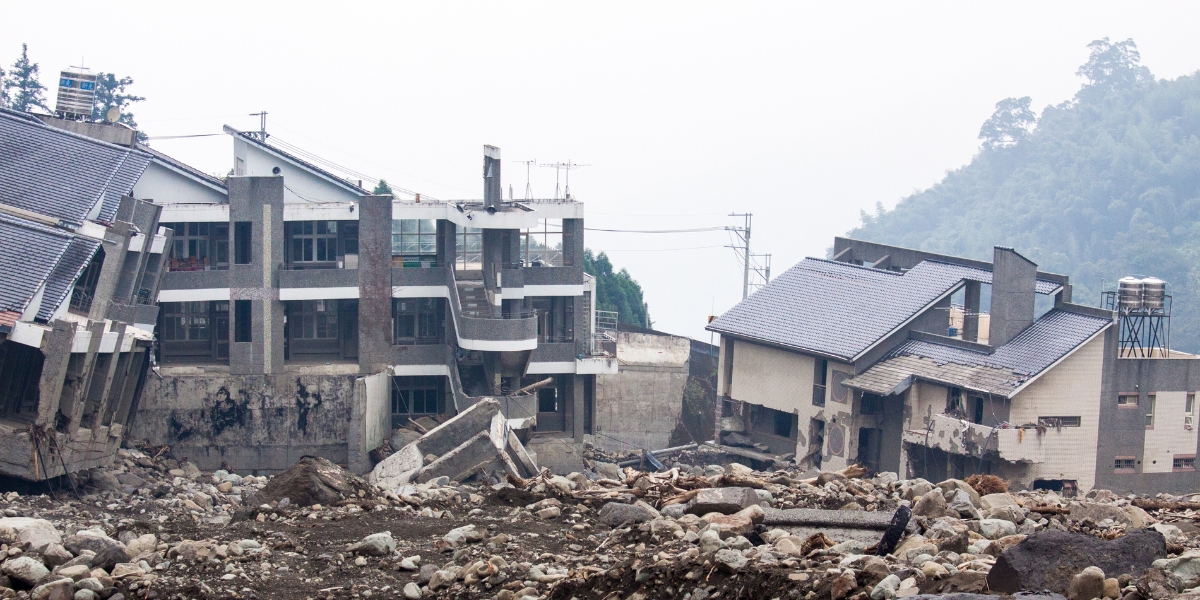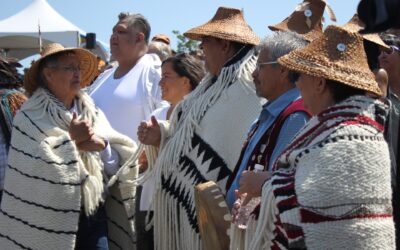What is a Disaster Recovery Framework?
A disaster recovery framework outlines your community’s plans for long-term resilience in the wake of an emergency such as a fire, flood, severe weather, or chemical spill. Disasters disrupt many interconnected parts of a community—from infrastructure to essential services and housing as well as community members’ psychological well-being and sense of security.
Using a framework provides a holistic view of disaster recovery and outlines how to tackle every phase of the post-disaster process across all affected areas. It allows leaders and emergency managers to meet the needs of the community in the short term and build back better for long-term risk mitigation.
- What a disaster recovery framework is and how to use it
- The difference between disaster recovery and emergency management
- Why you need a post-disaster recovery framework
- The core components of an effective framework

Disaster Recovery vs. Emergency Management
Climate change and human activity have made disasters far more common across Canada. Leaders need to plan ahead for disasters and implement proactive strategies to keep their communities safe. The current approach to dealing with disasters is reactive. Communities typically plan for emergency management, which might include the coordination of emergency services, temporary housing, funding for immediate aid, and infrastructure repairs right after a disaster happens.
However, emergency management is just one aspect of a disaster recovery framework. Disaster recovery is a long-term, multi-pronged process. It includes how leaders and aid providers respond in the days and weeks after a disaster, but it also encompasses strategies that support community resilience—which unfolds in the months and even years after a severe disaster. A post-disaster recovery framework helps leaders understand and tackle a broader scope of recovery work so that their community is strengthened by disaster, not destroyed by it.
One important difference between emergency management planning and disaster recovery planning is funding. Creating a robust plan that goes beyond short-term response to medium- and long-term recovery helps communities to secure more funding for disaster recovery services and programs at each phase.
Why You Need Post-Disaster Recovery Framework
Frameworks provide a structure for planning. You can think of a disaster recovery framework as a fillable form that already includes everything that needs to be addressed throughout the recovery process.
Dealing with disasters is overwhelming for individuals. There are many people and organizations that need to work together to make disaster recovery possible. A post-disaster recovery framework offers a way to maintain order and establish systems that run smoothly through all the phases of recovery. Having a framework in place reduces the mental load of starting from scratch every time your community experiences a disaster, helping you stay prepared for anything.

Get started on your disaster recovery framework →
Core Components of a Disaster Recovery Framework
A framework creates a clearly defined structure for all recovery efforts. It can serve as a North Star that enables all teams, groups, and individuals involved in recovery to stay on the same page about their goals and activities. Disaster recovery planning should be tailored to meet the needs of your unique community and there is no universal framework that will fit every community. Here are four core components that every framework should include:
1. Establish a Vision for Recovery
Like any goal-setting process, establishing a vision for recovery helps you understand exactly what you’re working toward. This provides a clear direction for the disaster recovery framework.
It’s essential that this vision reflects what recovery and resilience looks like for the entire community. Leaders and emergency managers need to take time to liaise with community members to understand their needs and concerns.
Community members can provide invaluable insights about potential vulnerabilities and highlight what aspects of recovery will make the most meaningful difference. They can also illuminate ways that leaders can address systemic disparities such as poverty or failing infrastructure that contribute to increased risk in the community.

2. Identify the Phases of Recovery
Disaster recovery planning requires leaders and emergency managers to think about the phases of recovery far beyond response. Identifying the phases of recovery helps teams extend their perspective and begin to think about the positive impacts that implementing recovery strategies will have well into the future. Effective planning can leave a lasting legacy of stability and risk mitigation in the community.
Generally, the three phases of recovery are:
- Transitioning from response to short- and medium-term recovery
- Long-term recovery
- Sustainable development and resilience
The timelines for each of these phases may differ depending on your community and the type of disaster you’ve experienced. This part of the framework will help you assess what realistic timelines look like for each phase.
3. Create a Recovery Coordination Centre
A disaster recovery framework enables emergency management teams to set up a temporary organization that will execute recovery strategy beyond response. Typically, communities set up an Incident Command Post (ICP) on the ground to coordinate response efforts and an Emergency Coordination or Operations Centre (ECC/EOC) to oversee the ICP and orchestrate all post-disaster recovery work. Response is psychologically and physically demanding for those involved. Once response is over, these parties may be burnt out and unable or unprepared to support the first phase of recovery.
Recovery requires collaboration and involves the expertise of many different people across different sectors, not just emergency managers and first responders. These groups include:
- Engineering and infrastructure
- Social services and housing coordination
- Environmental recovery
- Community and cultural leadership
- Disaster recovery services
A Recovery Coordination Centre is made up of teams whose responsibility it is to do the work of recovery. In setting up this centre, leaders take into account who will be available and capable of participating in each stage of recovery. This part of the framework details which parties should be involved and what their roles and responsibilities should be.

4. Outline Your Disaster Preparedness and Recovery Plans
Once you have established a vision for recovery, created a timeline and goals for each recovery phase, and laid the groundwork for your Recovery Coordination Centre, you can outline disaster preparedness and recovery action plans. While you will create this outline before a disaster happens, it’s important to note that it must be adapted to the specific situations your community faces.
This part of the framework outlines when and how to conduct and post-disaster needs assessment (PDNA) and also gives you the opportunity to create another framework to guide the PDNA itself. The outline should also involve setting priorities for disaster recovery, creating individual plans for every phase, determining how you will evaluate success, and detail what monitoring and continuous improvement looks like going forward.
Learn more about creating a community-centred disaster preparedness plan →
Get a Disaster Recovery Framework for Your Community
Rebecca Innes Consulting (RIC) provides custom disaster recovery frameworks for communities of all sizes. Our team works to understand what your unique community needs and leverages our disaster expertise to create a framework that addresses the complexity of recovery.
RIC Blogs
Supporting Disaster Preparedness in Indigenous Communities
Indigenous Peoples are disproportionately affected by disasters like floods and wildfires. As weather patterns shift and annual disaster seasons become the norm, the effects of climate change on Indigenous communities in Canada are becoming more severe. In 2023, over...
Four Common Gaps in Root Cause Analysis Methods in After Action Reports
Each community disaster is a learning opportunity. As disasters become more frequent, leaders need a system to assess what happened and how to improve. This will help strengthen their disaster preparedness plans for the future. Completing an incident analysis and...
When to Hire an Emergency Preparedness Planning Expert
Emergency preparedness planning is essential for communities as the risk of experiencing disaster increases. Events such as wildfires, flooding, and extreme weather are now regular occurrences in communities across Canada. The continued expansion of industrial...
Disability and Disaster Management
In an emergency, no one should ever be left behind. Emergency response plans must be inclusive and provide strategies for supporting every individual in your community—including those with disabilities. When it comes to disability and disaster management, most of the...
Crisis Leadership During a Community Disaster
Effective leadership during a crisis is multifaceted. The crisis leadership style that works for one type of community may not work for another. This is why emergency management teams must tailor crisis leadership training and guidance to the needs of the people...
Four Barriers to Community Disaster Resilience
Long-term community disaster resilience hinges on effective leadership, teamwork, and project management. In the wake of a disaster, individuals across organizations, levels of government, and industry sectors as well as members of the community itself must work...
How to Take a Holistic Approach to Your Disaster Recovery Plan
Emergency preparedness and recovery planning create stronger communities that are more resilient to the impacts of disaster. However, to see the benefits of a disaster recovery plan, emergency managers need to take a holistic approach to their risk assessment,...
What it Means to Build a Disaster-Resilient Community
Resilience doesn’t look the same for every community. Those in rural areas have different resources, needs, and cultural values than communities in urban centres. Indigenous communities have important traditional relationships with the land they live on, which also...
Three Critical Oversights in Emergency Planning
Effective response by an emergency management organization (EMO) is dependent on strong relationships. Emergency planning involves a highly complex network of organizations, businesses, teams, and individuals. Successfully planning for emergencies caused by disaster...
Five Keys to Securing Disaster Financial Assistance
Securing funding for disaster recovery can be a challenge for small emergency management teams, especially those in Indigenous communities. In addition to identifying funding options, teams are often faced with bureaucracy and a heavy administrative burden as they...



















